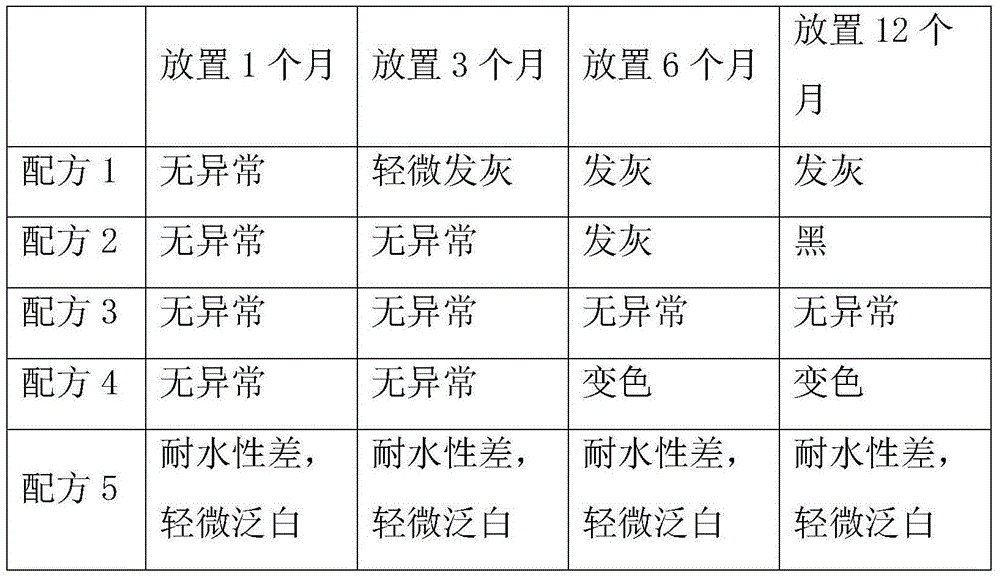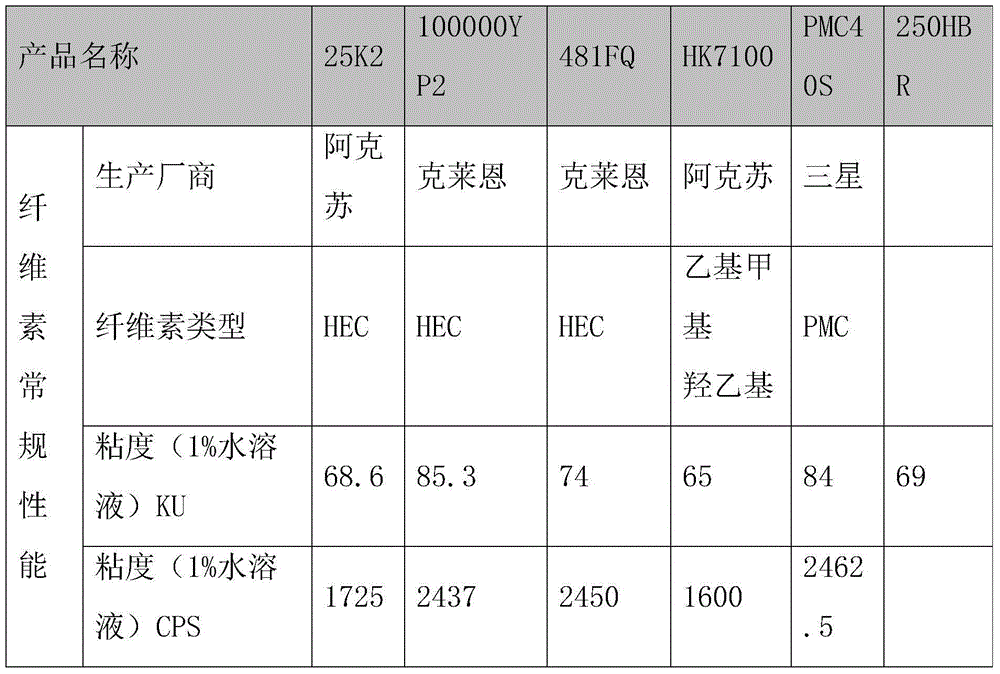Painted ceramic stone and production technology thereof
A mother liquor and aggregate technology, applied in the field of architectural decorative coatings, can solve the problems of easy washing off, long drying time, thick coating of real stone paint, etc., and achieve good stain resistance, smooth and dense surface, and good electrical conductivity. Effect
- Summary
- Abstract
- Description
- Claims
- Application Information
AI Technical Summary
Problems solved by technology
Method used
Image
Examples
Embodiment 1
[0027] This embodiment mainly selects the cleaning aids in the pottery color stone formula.
[0028] At present, the self-cleaning additives used in architectural coatings on the market mainly include: (1) Hydrophobic self-cleaning theory, people develop coating surfaces with low surface energy, simulating the surface of lotus leaves, in order to achieve the purpose of self-cleaning, the representative product is LC- 808 lotus leaf additive; (2) silica sol; (3) hydrophilic and stain-resistant theory, hydrophilic makes the surface of the coating easy to be wetted by water, and the stains adhering to the surface are easily washed away. The representative product is X -405 wetting agent; (4) Micronized coating film, adding easily pulverized pigments to the coating, and the pulverized pigments and contaminants will be taken away together when the rain washes away. The representative product is 1250 mesh talcum powder.
[0029] According to the performance detection method in the i...
Embodiment 2
[0039]The present embodiment mainly selects the cellulose in the pottery colored stone formula. The workability of ceramic colored stone is mainly affected by the thickening system and solvent. We need to adjust the workability of the coating by selecting the added cellulose. According to the performance test in the industry standard JG / T24-2000 "Synthetic Resin Emulsion Sand Wall Architectural Coatings" Method, the present embodiment selects several commonly used celluloses in the market and adds them to the emulsion for comparative testing. The results are shown in Table 3:
[0040] Table 3 Comparison of different cellulose properties
[0041]
[0042]
[0043] Use the cellulose from the table above for the recipe in Table 4:
[0044] Table 4 The mass parts of each component in the formula
[0045] raw material
Recipe 1
water
478
7.7
150
Ethylene glycol
14
Alcohol Ester-12
14
...
Embodiment 3
[0053] Preferably, in the pottery colored stone formula, wherein bactericide and antimold agent all adopt the bactericide LEX and antimold agent 363 that American Rohm and Haas Company produces, and the cellulose that selects the model that Klein Chemical Co., Ltd. produces is the cellulose of 100000YP2, In the selection of film-forming aids, in this example, the alcohol ester TEXANOL produced by Eastman Company was selected as the film-forming aid, the defoamer was selected from A-203, and the adhesive was selected from Changshu Badefu Technology Co., Ltd. The type is RS706T, and the thickener is TT615 produced by Rohm and Haas Company of the United States.
[0054] Prepare pottery colored stone finished products according to the formula in Table 6.
[0055] Table 6 pottery color stone formula
[0056]
[0057]
PUM
| Property | Measurement | Unit |
|---|---|---|
| particle diameter | aaaaa | aaaaa |
| particle diameter | aaaaa | aaaaa |
Abstract
Description
Claims
Application Information
 Login to View More
Login to View More - R&D
- Intellectual Property
- Life Sciences
- Materials
- Tech Scout
- Unparalleled Data Quality
- Higher Quality Content
- 60% Fewer Hallucinations
Browse by: Latest US Patents, China's latest patents, Technical Efficacy Thesaurus, Application Domain, Technology Topic, Popular Technical Reports.
© 2025 PatSnap. All rights reserved.Legal|Privacy policy|Modern Slavery Act Transparency Statement|Sitemap|About US| Contact US: help@patsnap.com



